We have a huge problem. You, your friends, your family, especially your kids. The problem is called sugar. If you're thinking now, "I'm not affected at all because I'm thin and athletic, and so are my kids," that's not necessarily true. In everyday life, we can all hardly escape the hidden sugar. Why this has a really dramatic impact on the development and health of your children, we explain in detail in this article.
In doing so, we debunk the following myths:
- If you want to stay slim and healthy, you have to exercise and eat less.
- Who eats little sweets, gets no problem with sugar.
- Who is thin, gets no problem with sugar.
- Official labels are a guarantee for healthy products.
- Hearty dishes do not contain sugar.
- Light products are a good alternative.
- Breakfast cereals are healthy.
- Sweeteners are the solution.
- Fat makes you fat.
- Juice is healthy.
Pandemic of obesity
Sugar consumption in the world has never been as high as it is currently, it has even tripled in the last 50 years. 35 kilograms of sugar per year have Germans and Frenchmen on average, South Americans even more than 60 kilograms. Thereby the recommendation is 9 kilograms per year in order to remain healthy.
On the day, an adult should take a maximum of 6 to 9 teaspoons of sugar. With Europeans it is on average 17 spoons, with Americans even 19.5 spoons, consumed daily. For Damon Gameau, who dared to experiment with sugar in his "Sugar Film," it was difficult to stay below 40 teaspoons of sugar a day during his trip to America, where he consumed it mostly as highly concentrated corn syrup.
We're surrounded by bad food, eating more than we used to. The portions in the big fast food chains have increased, which means you're feeding your body more calories and more sugar per meal. Of course you eat up, because you already paid for it.
At the movies, the average American eats 20 percent more calories than he should throughout the day. If it goes badly, he visits a fast food chain afterwards - because he ate while doing something else, so that the brain did not register possibly that he ate food at all. But there is also a tendency to eat more in restaurants. Quite a few judge a restaurant as good when the plate is full.

Not only do we eat significantly more sweets than we used to, the proportion of sugary drinks in our diet has also increased considerably since the 1980s. In addition, there are countless foods that we have no idea contain sugar. If we wanted to avoid all foods that contain added sugar, we would have to ignore 80 percent of what's on offer in supermarkets.
Toothless Kentucky
In the "Sugar Film," director Damon Gameau travels to Kentucky, where a caffeinated and heavily sweetened drink is produced and is also very popular there - it contains even more sugar than Coke, a full 44 grams per can. Gameau reports that Kentucky residents have dental problems. He interviews a 17-year-old boy who drinks 12 cans of the drink a day and says it's a local custom. His 3-year-old cousin gets the drink in his bottle; this brings the toddler up to 6 to 7 cans a day. The young interviewee has to have all his teeth pulled out because of his immense sugar consumption, which does not dampen his enthusiasm for the soft drink. He plans to keep drinking it - it just tastes good to him.
For one thing, this development has aesthetic implications: most Americans are now considered obese. In Germany, more than one in two suffers from overweight, one in four from obesity. Already 15 percent of children are considered too fat, 6 percent even obese. The proportion of overweight children has increased by 50 percent in the last thirty or forty years. In America, more 2- to 5-year-olds are obese than it used to be the case.

In Asia (even in India) and on the African continent, the percentage of obese children has increased. Globally, there are 30 percent more fat people than malnourished. The leaders in terms of overweight and obesity are Mexico, Chile and the USA with over 70 percent, followed by many European countries and Australia and New Zealand. Germany is at 60 percent. Obesity mainly affects the poorer parts of the population.
In the "Sugar Film," among other things, the aborigines of Australia are portrayed, who traditionally ate a very low-sugar diet - until civilization reached them. From that point on, many of the Aborigines became ill. The community of Amata wanted to do something about it and created the "Mai Wiru" initiative, following advice from a nutritionist. From then on, the community's residents ate mostly sugar-free. Unfortunately, at some point government funding was cut; the residents fell ill again: with diabetes and kidney failure. They had to go on dialysis. Many died, including quite a few under 40.
The neuroendocrinologist and pediatrician Robert Lustig already speaks of a pandemic of obesity in his 2013 book "Fat Chance". The World Health Organization is also warning of a worldwide epidemic of obesity. Lustig's prediction is that those who were children in 2013 will be the first generation to have a lower life expectancy than the generation before.
Scientists at the University of San Francisco have estimated that sugar contributes to 35 million deaths worldwide each year from chronic diseases; that would be one death per second. Even in the Third World, diseases of civilization have increased sharply and are now more widespread there than infectious diseases. In Germany alone, more than 1000 people are told every day that they have type 2 diabetes.
The nutritional descent of Okinawa
It is known that the inhabitants of Okinawa become particularly old. Or rather, became. Meanwhile, Western dietary habits have reached the island. Many residents have traditionally subsisted on abundant vegetables, fish and lean meat, so most of the diseases of civilization were virtually absent there. Because the younger generation now eats according to Western models, Okinawans are now getting fatter than the rest of the Japanese.
Even if we personally do not suffer from diabetes or are overweight, the issue still affects us. Obese individuals incur costs that are borne by the government, ultimately the taxpayer. According to Foodwatch, the consequential costs caused by obesity in Germany amount to 63 billion euros a year. But it is not just a financial problem: It is also important for the future of our society that it is as healthy as possible. After all, healthy people are more innovative and more efficient overall, while sick people tend to drop out of the workforce earlier.
Sugar as a cultural asset
There is no escaping sugar, right from the first birthday. There is hardly a celebration where sugar is not consumed: whether at a child's birthday party, at a wedding celebration with the obligatory wedding cake, as a gift for Mother's Day, a guest gift during visits or on the sweet table at work: products containing sugar are omnipresent. You have to have a strong will to resist. Many people don't have it - for reasons we'll get to later. There is hardly anyone who can imagine a complete sugar renunciation.

How about you? Could you imagine giving up sugar?
The situation was different 200 years ago. Back then, there wasn't a single society in which sugary foods and drinks would have been served predominantly at celebrations. What's worse, we now use sweets to express our love, instigated by the advertising that surrounds us every day. It is much easier to press a box of chocolates into the hand of your sweetheart or your own child than perhaps to bring ourselves to say "I love you." The amazing thing is that our brain reacts to this expression of love in exactly the same way as it would to signs of genuine affection: happiness hormones are released, we feel good. That's why many lonely people also like to reach for chocolate - it promises temporary relief.
More than 15 teaspoons of sugar a day
Little children have to get used to food first. Robert Lustig reports that we have to put each food in front of children to eat 13 times until they get used to it. With sweet foods, however, one time is enough. That's why sugar is added to most foods for children, even supposedly healthy vegetable dishes.
Sweetened vegetables
If a mother gives her child an industrially produced vegetable product to eat, the child is very likely to accept it because it is sweetened. As a result, the mother is happy because her offspring finally accepts vegetables. She will buy the sweetened product of this very manufacturer again and again from now on, so that her child can get his ration of vegetables.
Vegetables are not very popular with children because they naturally contain no sugar. We parents often give up too early on getting our kids used to its taste. As a result, they eat an unbalanced diet, eating lots of sweets, fatty snacks, meat products and drinking soft drinks instead.
Of course, there are parents who make sure that their children do not snack so often. They are relieved when the little ones eat cereals for breakfast, for example. Unfortunately, these are not as healthy as you might think, because they contain lots of sugar. Foodwatch reports that 90 percent of cereals are clearly too sweet for children and do not meet the WHO recommendations. In many countries, they are among the foods with the highest sugar content. Foodwatch says that 90 percent of foods and beverages aimed at children contain too much fat, salt and sugar. Not even products for the very young are free of sugar.
Would you have known?
A hazelnut-chocolate breakfast spread, which is especially popular with children, contains a whopping 56 grams of sugar per 100 grams of cocoa mass. More than half of the jar is filled with sugar.
In America, kids often eat Pop-Tarts in the morning: a sweet dough pastry with a sugar glaze and a sweet filling, prepared in the toaster. This may be accompanied by a yogurt. Whereby even the (fruit) yogurts in Germany are considered more of a sweet than a healthy snack. Some even contain more sugar than cola and thus cover the daily requirement of a child.

In total, children eat more than 15 or even 20 teaspoons of added sugar daily, although it should not be more than 3 to 4. So they are consuming 4 to 5 times the amount of sugar - often through hidden routes, as we will see later.
Appearances can be deceiving
Some children look thin and healthy, but are rather sick inside as a result of increased sugar consumption. This phenomenon even has a name: TOFI ("thin outside, fat inside"). 40 percent of normal-weight people show the same disease symptoms as the obese population group.
Type 2 diabetes, depression, fatty liver
But it is not done with breakfast alone: many children eat snacks, sweets, at lunchtime highly carbohydrate-containing foods, plus dessert in between. All of this causes the blood sugar level to rise for a short time. The result is a "sugar high": the children are in a good mood, sometimes over-excited - until insulin is released as a result of the high sugar concentration in the blood, which ensures that the sugar is broken down. The children's mood drops along with their blood sugar level; they react irritably, defiantly, become tired, cranky - until the moment when they eat something containing sugar again. Then the process starts all over again. So children ride a roller coaster of nutrition throughout the day, with mood swings and moodiness. This process, which is repeated several times a day, not only affects children's behavior, but also their brain function and thus their learning performance. In addition, increased sugar consumption is associated with ADHD.
Smarter without soft drinks
In a study from California, it was shown that the grade point average at schools rose when vending machines with sugary soft drinks disappeared from there.
While type 2 diabetes was long considered a "disease of old people," it is not uncommon nowadays for children to contract it as well. According to endocrinologist Robert Lustig, this is related to increased sugar consumption. Nutritionist Kamila Banel reports that some children have the cholesterol level of a 60-year-old man, as if they had been living an unhealthy lifestyle for years. American studies have shown that 10-year-old obese children already have a vascular system similar to that of people in their mid-forties.
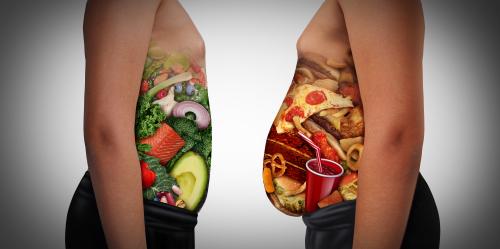
In addition, Kamila Banel also encounters children who already suffer from fatty liver at the age of 11, a disease that is usually due to increased alcohol consumption. If we add too much sugar to our bodies over long periods of time, we not only put a strain on our pancreas, but also on our liver. This is because sugar is metabolized in the liver in the same way as alcohol. The excess sugar is stored by the liver as fat - and this eventually leads to dramatic consequences. Fatty liver, which develops without the influence of alcohol, was not yet known in the 1980s. It is a precursor to insulin resistance, which in turn leads to diabetes.
Complete sugar avoidance?
You hear it again and again: our body needs sugar. Yes, that's true, the brain actually needs 120 grams of glucose daily to function, and can't replace it with anything else. If blood sugar levels drop too low, central nervous system problems occur. You get headaches, blurred vision, shaky hands, you are sweating, you feel dizzy. However, many foods naturally contain sugar, whether milk, fruit or carbohydrate-containing foods, which more than covers our needs.
That high sugar consumption can lead to tooth decay is well known. Children who eat sweet frequently also get flatulence because the sugar ferments in the intestines. Disturbed intestinal flora can also be linked to depression. This mental illness is now also found among children. Because fat children suffer from their corpulence, they also have lower self-esteem. Last but not least, children who eat a lot of sweets have trouble falling asleep. Boys or men can also grow breasts due to the disturbed hormone balance.
Better a big butt than a big belly
Surplus energy, that is, the calories that the body does not need, are stored in the form of fat. This served in earlier times, when there were no supermarkets, as a fat reserve for bad times - famines were not that rare. In the body we have three places where fat can be stored: First, the excess fat is stored under the skin as subcutaneous fat, which bothers many people, but is harmless to a certain extent from a health point of view. It is worse with the second fat deposit, the abdomen. This fat is not necessarily related to what you eat. So-called visceral fat is related to increased cortisol secretion - cortisol is released when you are stressed. Unfortunately, our children are now experiencing stress as well, whether it's from bullying at school, recurring lockdowns, anxiety scenarios, or poverty at home. The inflammatory substances produced by visceral fat go directly to the liver. Italso forms the third most devastating fat depot. While the body tolerates 10 to 20 kilograms of excess subcutaneous fat quite well, liver fat is only 300 grams.
Obesity is not in itself a disease, but rather a symptom of unhealthy processes in our bodies. The late consequences of increased sugar consumption over many years are high blood pressure, cardiovascular disease and kidney damage. The immune system is weakened. High sugar consumption promotes cancer growth, because cancer cells need sugar to grow. In addition problems with the eyes occur, with the joints and sometime the impotence, caused by a vascular constriction.
Who thinks that this does not concern children, is correct indeed. But children, who already weigh too much in early years, hardly get away from it. Usually the condition worsens with increasing age.
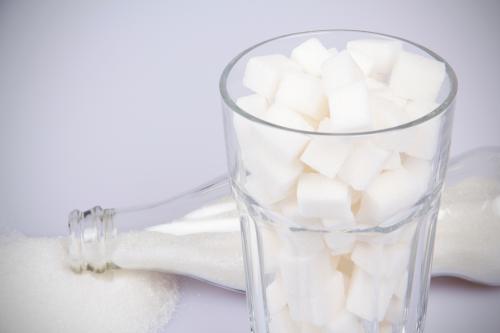
All in all, pediatric endocrinologist Robert Lustig notes that sugar is clearly toxic once it's overindulged. And that, as we have seen, is the case for many people. In one of his lectures, Prof. Vicenzo Castronovo of the University of Liège even refers to sugar as a serial killer, because many people actually die from the consequences of increased sugar consumption.
BMI - to be taken with a grain of salt
While in adults a BMI up to 25 still represents a normal weight, in children the value is given as a BMI percentile, which should be below 90.
But are these two values at all meaningful? Unfortunately, not always. Muscle is known to be heavier than fat. Therefore, an adult or child with a high muscle mass can have a BMI that is well above the recommendation, but still be perfectly healthy. Again, there are also people who appear slim, but have a lot of fat and little muscle mass, and are still in the healthy BMI range.
Hidden Sugar
You'll have to be quite strong for this chapter, because you'll learn here that sugar is hiding everywhere. Many dishes that - prepared at home - don't need any sugar at all, nevertheless contain it in the supermarket version. Let's go through the shelves: If we look at the labels of packaged foods, we discover sugar in just about every one of them.
Prepared foods
The problem with sugar, above all, is that it hides in products where we don't expect it. Here is a small selection of foods that contain sugar: salad dressings, sauces (including ketchup and mayonnaise), pickles, coleslaw, red cabbage, cooked ham, ready-made lasagna, fruit yogurts, balsamic vinegar, crackers. Even whole wheat bread contains sugar - check the back of the package! Even a big bowl of bagged soup has 4 cubes of sugar in it. All in all, each product on its own may contain a small amount of it, but since we eat various of these foods throughout the day, a lot accumulates in total.
Fast food
In a burger with fries, there is no sugar? Think again! Fast food is full of hidden sugar. That's precisely why it tastes so good. A medium burger with a large portion of fries contains 19 teaspoons of sugar. We ourselves were amazed when we researched that. That's twice as much as the American Heart Association recommends, for example - spread throughout the day, mind you. A dessert of ice cream in a large fast food chain, which is advertised as a snack between meals, contains, for example, 15 teaspoons of sugar.
Bon appetit!
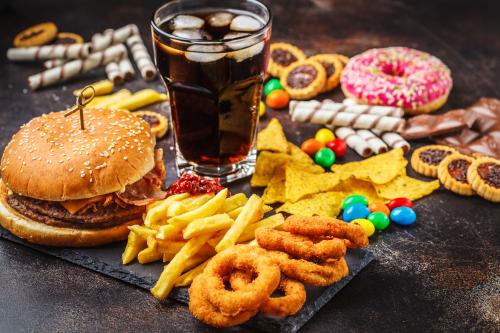
Soft drinks
It's well known that cola drinks aren't exactly healthy and aren't recommended for children because of their caffeine content. But did you know that a 1.5-liter bottle of cola contains 54 pieces of sugar?
You're amazed, aren't you? We honestly also are.
A popular soft drink from the aluminum pack, the one with the tasty fruits or funny animals on the bag, the one you might have liked to stick your straw into as a kid, contains more than 5 pieces of sugar - per bag, that is, per 200 milliliters.
In turn, a glass of iced tea contains more than 4 pieces of sugar.
We are slain.
And we are still lucky in Germany: Damon Gameau talks about 9 pieces of sugar per glass of iced tea in Australia.
Would you have known?
The Australian adult consumes 40 teaspoons of sugar a day, much of it through drinks.
Some schools in America wanted to do it right: they banned sodas - and replaced them with sports and energy drinks. Unfortunately, these are even more sugary. We took a look: A small can of an energy drink widely available contains more than 9 sugar cubes - presumably to mask the high caffeine content.
Fruit juice
Juice has a good image because everyone associates it with something healthy. On the one hand because of the vitamin content, on the other hand because juice is obtained from fruits. What is healthier than fruit?
In order for a fruit juice to be called "fruit juice," in Germany it must consist of 100 percent fruit and must not contain any sugar. With the "fruit nectar" this is no longer so and so-called "fruit juicedrinks" contain only little fruit - and for it each quantity sugar. There are no exact specifications for smoothies, so many of them contain a lot of sugar and little fruit. In fruit smoothies, there is sometimes just as much sugar as in cola.
Dull food
Why is it precisely the added sugar that is problematic for children? Eating sweetened foods every day, they eventually have the expectation that every food must be sweet. Otherwise, it doesn't taste good to them. If parents now put broccoli in front of the child at home that contains bitter substances and is not the least bit sweet, the child refuses to eat it. A real problem for parents.
But how healthy is fruit juice now? Or a homemade smoothie? In many health guidelines, drinking juice is recommended, even aid organizations in America distribute juice to the poor. Then it must be healthy!
The children's endocrinologist Dr. Robert Lustig and Dr. Praveen Sundaraj Goday, children's gastroenterologist from the Children's Hospital of Wisconsin, speak out quite clearly against juice and say: rather eat the fruit instead of drinking the juice. While fruit also contains sugar, and natural fructose, the volume of the fruit and the fiber it contains make us feel full just eating it, so we can't consume an infinite amount of it.
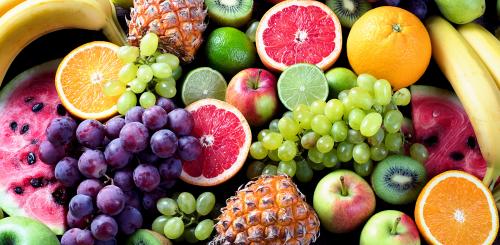
This is not the case with juice: we don't feel full even if we've just downed two oranges and two apples. But the liver is flooded with sugar. The biochemist from the Californian Touro University Jean-Marc Schwarz speaks in this context of a tsunami effect. What's more, children often drink their juice before eating. That drives their blood sugar level upward already before the meal and ensures that the calories are stored as fat.
What about sugar substitutes?
Unfortunately, they are not healthy, either. Robert Lustig admits indeed that a diet coke is only half as toxic as a normal coke. But because it contains no sugar, consumers are enticed to drink significantly more of it. Even though sweeteners do not contain fructose, they alter our microbiome (our gut flora). This can lead to irritable bowel syndrome or what is known as leaky gut. In leaky gut, the barrier function in the small intestine is disturbed, allowing undigested particles from the intestine to enter the bloodstream. The result is allergies and autoimmune diseases - and severe fatigue immediately after eating. In addition, drinks with artificial sweeteners lead to insulin resistance, according to Dr. Praveen Sundaraj Goday. And they intensify our cravings for sweets.
Confusing labeling
But even those who are determined to avoid all unnecessary sugar don't have it easy. Nutrition labeling in Germany is more than complicated, which is why you don't spot sugar right away. It hides under names such as sucrose (household sugar), fructose (fruit sugar), agave syrup, glucose syrup, glucose-fructose syrup, lactose (natural milk sugar) and honey (which consists of a high percentage of sugar). Often, different sweeteners are used side by side so that they don't take up such a large percentage of the ingredients and slide down the label.
Sugar substitutes are sweet and caloric, but they don't have to be declared as sugaron the label, but as carbohydrates. Sugar substitutes include sorbitol, mannitol, isomalt, maltitol, lactitol, xylitol and polyglycitol syrup.
The consumer center also reports targeted consumer deception: There are cappuccinos, which are advertised on the packaging as "less sweet", but contain only insignificantly less sugar. Another manufacturer is more specific: "30 percent less sugar" is written on the packaging. What is concealed, however, is the fact that the cocoa-based drink contains maltodextrin, which has just as many calories as regular sugar. The deception in both cases is that buyers actually expected fewer calories.
"Am I not allowed to eat anything now?"
... you might ask yourself. Fortunately, it's not like that. At the end of the article, we'll show you ways you can easily eat a low-sugar diet - without sacrificing taste.
Why so much sugar?
In its feature "Die Tricks der Zuckerindustrie," the sender SWR shows that 80 percent of the sugar produced by a well-known German sugar manufacturer doesn't end up in retail, but in food production. Why is food full of it? Well, sugar is tasty; even a mediocre meal can gain significant flavor with it. Sugar is a natural flavor enhancer that makes everything edible.
It is also a good preservative that makes food more durable. Ketchup, for example, which contains a lot of sugar, does not need preservatives or modified starch. Foods to which sugar has been added last longer because they are not broken down as quickly by bacteria. But that's exactly why we should avoid these foods, says Robert Lustig. Because that way the bacteria in our intestines can't decompose them well either.

Sugar is cheap because sugar beets, from which it is predominantly made in Europe, are. The food is ten times cheaper than coffee and also significantly cheaper than most other components. If a product contains a lot of sugar, the manufacturer can use it to save some of the expensive ingredients - and increase his returns. He would not be able to achieve this at all in the fruit and vegetable trade, for example. This makes sugar a cheap filler. The program "frontal" even calls it a wonder weapon of the food industry.
But we must not forget that we as consumers, with our buying behavior, also indirectly determine how much sugar a product contains. Nowadays, the sale of goods runs on price. If it is cheap - or at least cheaper than the competition - it will be bought. That's why, to some extent, the industry is forced to use more sugar to keep up with the price war.
Sweet, sweeter, sweet spot
In the 1970s, Howard Moskowitz discovered the sweet spot: the more sugar a product contains, the more popular it is with buyers. But this cannot be continued indefinitely; there is a limit. If you go beyond that with the sugar content, the food gains nothing - quite on the contrary. Companies have always researched how to achieve maximum acceptance of the products they offer. When the sweet spot, the optimal level of sweetness, was identified, their products sold much better. This point exists in almost every food product, whether it's instant sauce, breakfast cereal or soft drinks.
Would you have known?
Industrially produced cakes, cookies and pies contain significantly more sugar than comparable ones you would bake at home.
A calorie is a calorie - or is it?
We exercise too little and eat too much, that's why we get fat - they keep saying. This is true, but is not the whole truth. Because then the solution would be to pull yourself together and eat less. The calculation seems simple: eat fewer calories than you consume and exercise. Surprisingly, fewer and fewer people manage to do this. Are they all undisciplined and lazy? This is the impression given by many people. That's why overweight people often see themselves as culprits who can't keep their appetite in check - and not as victims, as Robert Lustig sees them. As an endocrinologist, he has observed many cases of obesity in adolescents, young children and even infants, which can have nothing to do with their own volitional choices. In his book "Fat Chance," for example, he talks about a six-month-old baby who was born already with a high weight, then displayed a large appetite, and by the age of one had high cholesterol and elevated blood pressure. He proves that fat burning processes are not subject to our free will. After all, it is biochemistry that determines our behavior.
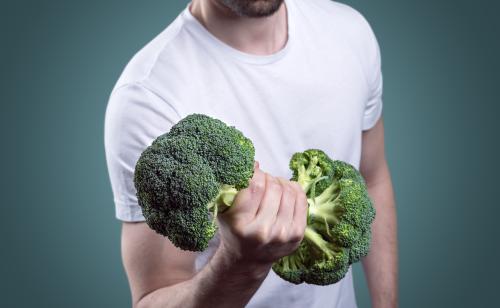
Which is heavier - a kilo of sugar or a kilo of fat?
No, seriously, Australian filmmaker Damon Gameau has undertaken a self-experiment to prove that sugar is not only unhealthy. But that one calorie of sugar is not the same as one calorie of broccoli, as claimed. Like the average Australian, he consumed 40 teaspoons of sugar a day for 60 days through his "normal" diet. During the experiment, he consumed about the same amount of calories as he had in his previous life, except that the calories had a different origin. During that time, he often did not feel full.
And the results of his unusual self-experiment? He got a fat belly, gained 8.5 kilograms in that short time and had 4 percent more body fat. His triglyceride levels (the fats that can be measured in the blood) went up. Following the experiment, he had difficulty returning to his original eating habits because his body had already become accustomed to the steady sugar intake in that short time.
His conclusion: the previous method of counting calories probably needs to be rethought, because apparently it is not only important how many calories we eat, but rather where they come from.
Fat makes you fat - doesn't it?
From the 1980s onward, people heard from everywhere that fat was worldwide responsible for increasing cardiovascular problems. It was said that anyone who wanted to eat healthily should avoid fat as far as possible. This recommendation found its way into international dietary guidelines. In the meantime, two scientists have been able to show that this was based on a deliberate manipulation aimed at "absolving" sugar. Because the food industry wants for the above-mentioned reasons still to use sugar as often as possible and as much as possible.
According to nutritional physician Matthias Riedl, the intake of healthy fat actually tends to make us live longer and can even help us lose weight.
The consequence of this targeted misinformation was that fat-reduced products came into fashion. The problem with fat reduction in light products, however, is that they taste like hardly anything, because fat is a flavor carrier. The solution - and the con in doing so - was to add lots of cheap sugar to the foods instead to make them edible. Of course, this made them anything but low-calorie.
arte/ZDF report in "The big sugar lie" about an endurance athlete who completed 10 hours of training a week. In addition to training, he ate light products according to nutritional guidelines. The result: despite his many training sessions, he was diagnosed with "prediabetes" by his doctor. This example also shows that exercise is not everything.
In addition, studies on the harmlessness of sugar have been published to reassure critical consumers. As before, the connection between sugar and many deadly diseases is denied. In the 2015 documentary "The Big Sugar Lie," today's fight against the sugar industry is compared to that with the tobacco industry a few years earlier. Back then, scientists were also consulted to prove that tobacco was not that harmful. Smoking doctors were present in the media. To date, it has not been proven that smoking leads to lung cancer - just as it has not been proven that increased sugar consumption is linked to cardiovascular disease. Such studies would be unethical because they would expose subjects to unnecessary risk for years. Both industries - the sugar industry and the tobacco industry - use the same mechanisms. Opponents, as in the case of sugar Robert Lustig, are discredited as fanatical charlatans.
As before, official bodies deny the connection between sugar and type 2 diabetes. Instead, there is talk of responsible handling. Why this demand is almost absurd, we show in the chapter on sugar addiction. Mandatory food traffic lights, which would allow consumers to easily read the amount of fat, sugar and other ingredients in a food, have been prevented and remain voluntary - with devastating consequences for consumers.
There is no cauliflower lobby
But why are there such strong efforts to portray sugar as harmless? If health organizations were to officially state that sugar is unhealthy, they would be attacking powerful interest groups that profit enormously from sugary foods. This is what many governments are afraid of. Sugary foods - especially sweets - are a huge business.

In 2020, the program "frontal" talks about the fact that there is only one consumer lobbyist in the European Parliament next to 100 industry lobbyists. According to arte and ZDF, the 2013 Canadian obesity conference was sponsored by a leading fast food chain and a leading soft drink manufacturer. As a result, the sponsors decided which scientists were allowed to speak at the conference. At the talk by one of the two sponsors, however, media were not allowed.
"Foie gras", which is considered a delicacy in France, is made by feeding vast amounts of sugar to ducks or geese. Biochemist Jean-Marc Schwarz of Touro University in California expresses the view that the American food industry is doing the same thing to the population of North America.
arte and ZDF also reported on how the logo of the Heart and Stroke Foundation of Canada was emblazoned on fruit gums that were made of 80 percent sugar. The fruit gums were actually made from fruit or fruit juice, but the fruit content was minimal. The devastating thing about something like this is not only that children in particular are the target group for such sweets, but that parents have a clear conscience when buying them because the logo of a health organization is emblazoned on the packaging.
Whereby this happens of course not only in Canada. In France, the "Semaine du goût" (Week of Taste) takes place year after year. During this week, many workshops for children take place in which healthy food is the focus; in some cases, chefs come into the classes to talk to the students. In the 2018 program "Tout Compte Fait" on the French channel France 2, it is reported that the industry itself is influencing this: In the accompanying handout for teachers, there is a chapter on sugar as a flavor carrier. Three pages are devoted to sugar, supplemented by small games to introduce it to children. There are no accompanying warnings about increased sugar consumption. The "Semaine du goût" was launched in 1990 by the "Collective du Sucre" (sugar collective) and is possibly lobby work.
Energy for hard times
That we humans have a natural craving for high-calorie food is evolutionary-biological. Anything that contained a lot of calories was consumed to ensure survival in times of food shortage - and that was not at all rare. Sweet things were very welcome in such circumstances. With anything sweet, man could be sure that it was not poisonous. There are virtually no sweet fruits that would be poisonous. If a fruit is not yet ripe - and thus potentially poisonous - it tastes bitter. And is not consumed by humans and animals.
This sophisticated mechanism, which "calibrates" us to the sweet and fat, unfortunately does not fit our present society, in which abundance prevails. Because even today we are "triggered" when we see something sweet - one person more, the other less. We have learned (even if only unconsciously): sweet stuff is not only really tasty, but does us good first - just think of your favorite cake in the sunshine in your favorite cafe, perhaps a latte macchiato to go with it ... That makes you happy, right?

In fact, this is even scientifically proven: When we consume sugar, or when we eat a lot of carbohydrates (which are also composed of different sugar molecules), happiness hormones are released. Serotonin levels rise. Dopamine is also released, which is closely related to our reward system.
Sweet, sweeter, addicted
When we consume sugar, the reward system is activated: We reward ourselves and that creates a good feeling. Now, if we later see something sweet - or even just a picture of it - dopamine is released again, which makes us want the sweet food. Because we know that it makes us feel good (for now). The dopamine also makes us want more of the substance. The more we eat of it, the more our craving for it increases.
We get used to the feeling of happiness and, in order to maintain it, we need more and more of it. We not only want these foods, we really need them. In addition, we have also become accustomed to a certain level of sweetness that foods must have. If they don't have it, the food tastes bland. These mechanisms also work to a strong degree in children, who are programmed to eat sweet things.
By the way, dopamine is not only released when we eat, but also when we use social media. We get used to comments, likes, short messages and need more and more of them to be happy. That's why there are a lot of kids and teens who spend any amount of time on social media. The media are deliberately designed to be somewhat addictive.
It's the combination of lots of sugar and high fat content that is particularly addictive. If caffeine comes in addition, as for example with a Frappuccino or a Cola (which is drunk also by children), the effect is again strengthened. Prof. Vicenzo Castronovo of the University of Liège talks about the sugar industry making us addicted so that we buy more and more of the food it produces.
Cocaine for the youngest
Sugar has a similar effect on the reward center as alcohol, nicotine or cocaine. When sugar and cocaine are consumed, the same areas in the brain are stimulated; dopamine is released. And in all cases, the "high" lasts for a certain time, after which we need a refill. Addiction researcher Prof. Falk Kiefer, who treats alcohol and cocaine addicts, among others, and also conducts research on obesity, sees very clear parallels in the brain: If overweight people are shown pictures of fat, but especially sugary food, the brain reacts similarly as it does with alcoholics who look at party scenes or alcohol advertising.
Placing people in an MRI scanner shows that in those who rarely eat sweets, the reward center is immediately activated when they enjoy ice cream. In those who eat ice cream frequently, hardly at all. They have become accustomed to the effect. However, these people react more strongly when they are shown the image of sweets or, for example, that of an ice cream parlor. This mechanism ensures that they eat even though they are not actually hungry.
Sugar can trigger addictive behavior in some. Dr. Serge Ahmed had observed in rats that sugar probably has an even higher addictive effect than heroin and cocaine. That's why some scientists consider sugar a hard drug - offered to children at every imaginable festivity. And otherwise - unlike drugs - is also available on every corner. Kamila Banel rightly says that it would be a scandal if we were to bring cocaine to children when we visit. However, if we bring candy instead, that's perfectly fine.
Professor Joseph Schroeder of Connecticut College, along with his assistant, has shown that rats became more addicted to cookies, which are very popular in America, than to cocaine. Further experimentation showed that rats strained more to get sugar during trials than they did to get cocaine.
Damon Gameau realized how addicted he was after six weeks of sugar experimentation when he tried to stop using the "drug." He compared the first week to giving up nicotine. By the way, this experiment can be easily replicated by anyone if we do it on ourselves (even without having increased the dose of sugar beforehand): Just try giving up sugar completely. If you've done this before, you'll know the feeling that something is missing, that you're not really satisfied. Some will have made the experience that late in the evening they run to the supermarket in order to get the "substance" - to afterwards sit contently on the couch.
The interaction of the hormones insulin and Leptin ensures for the fact that we become ever fatter as a consequence of an increased sugar consumption. Leptin signals to the brain that a person is full and does not need to eat any more food. Insulin is its counterpart: the less insulin we have in our blood, the better leptin is recognized by the brain. If the insulin level is too high, the leptin cannot be recognized; we continue to eat. A high insulin release causes the body to store fat. In contrast, a high leptin release causes fat to be burned. Unfortunately, insulin levels in our society continue to rise year after year. People today secrete twice the amount of insulin as those 30 years ago - with the same amount of sugar.
Comfort Food for Stress
Nowadays, we have more occasions to feel stress every day than we used to. When we are stressed, our body releases cortisol, and this makes us eat more comfort food, that is, food that calms and satisfies us for the time being, sweet as well as fatty. Negative feelings are increasingly fought in this way with food.
A British study has shown: The lower the position a person has in the working world, the shorter she lives, because stress increases. Stress as a result of insecure living conditions also changes our brain structure.

Unfortunately, children also increasingly have stress. They may be bullied by others at daycare or school, or worry when there is tension within the family. Or because the family doesn't have much money and they can't afford the fancy pants that are in right now and are ashamed of it. Or in the case of pandemics, which shake up everyone's view of the world and place a particular burden on children. Even when parents have little time for them because they have to work. Children react to psychostress by eating. Even in the absence of love and acceptance, they reach for sweets - even later in adulthood. Stress leads to insomnia, which in turn leads to increased food intake.
If children have stress in their childhood, the risk is higher that they will become fat as teenagers or adults. But this mechanism takes effect earlier: stress in the mother or poor nutrition is transmitted to the fetus. If the mother is stressed during pregnancy, she signals to the child that the world outside is hostile. The fetus is told that it had better store up energy because it will probably need it later.
Those who were malnourished as fetuses are more likely to suffer from obesity later. Unfortunately, this is also true for many premature babies. If the treating physician wants to do well and prescribes to them additionally high-caloric baby milk powder, they become accustomed already early to a high calorie supply and become later possibly likewise thick.
No escape
The way out of the stress trap is simple; at least that's what the media suggest with advertisements around the clock: Just reach for a sweet snack and you'll get relief. That's the advertising message. The devastating thing about advertising, however, is that children up to the age of 8 in particular cannot distinguish it from normal entertainment programming - just as they often cannot separate truth from fiction.
The amount of time a child spends with different media each day increases from year to year. During commercial breaks, the little ones are confronted with heroes from popular children's series who have chosen just the unhealthiest product. Afterwards, the little ones whine in the supermarket - also so that their mom buys them the toy that is enclosed with a sweet.
Sweet things also sell best at the kiosk. The sweeter a food, the better its sales. German confectionery manufacturers are at the top in Europe, with no other food product generating higher profits. Sales are rising - even though most shoppers are aware that they are not necessarily doing themselves a favor. And children and young people in particular love sweet stuff.

Through its clever advertising measures, which often target very young children, the food industry torpedoes parents' attempts to get their offspring used to a healthy lifestyle. Especially when, for example, children's parties are sponsored by food companies. Not even educational campaigns are of any help here - they can't even compete with the food industry's advertising budget.
The importance of nutrition
Every child knows that we should eat healthily. But only a few know how closely our health is linked to what we eat. A child's brain is formed during pregnancy. How well it functions depends on how the mother eats during that time and what the infant is fed after birth.
In one study, hamsters were given only corn to eat. This one-sided diet caused the animals to behave aggressively. It even went so far that the females ate their young.
An Australian study found that children of mothers who ate a lot of processed products during their pregnancies were crankier, more aggressive and even more choleric overall. The same was true for children who ate these products themselves. They were also more anxious and had nightmares.
During World War II, there had been a famine in the Netherlands. This resulted in some women being malnourished. The consequence for their children was that they experienced social difficulties during their lives.
That nutrition not only has an influence on our health, but also on our thoughts, could be proven at the Institute of Psychology in Lübeck: The test subjects were presented with some coins. How many of the coins they were given (and allowed to keep) at the end of the experiment was determined by another person. However, this person proceeded quite unfairly, allocating eight of the ten coins to himself and giving only two to the test person. The question to the test person was whether she or he accepted this offer and took the money, or rather renounced - so that the other one likewise didn't get anything.
Surprisingly the decision was connected with what the test persons had for breakfast. They people were given similar breakfasts on two days, one of which was higher in protein, while the other was higher in sugar. Those who had eaten the high-protein meal reacted more tolerantly to what was offered, while the "sugar group" was more sensitive.
The experiment shows that our meals subtly change the chemistry in our brains in just a few hours. As a result, they have an impact on our psychological well-being.
In a study conducted in a prison, inmates were given important vitamins, minerals and omega-3 fatty acids in addition to their usual diet. As a result, incidents in prisons decreased by one-third.
Our brain capacity and memory are also very likely related to our diet. The University of Sydney formulated the hypothesis that high-fat and sweet foods cause inflammation, which also spreads to neurons.
What are the benefits of avoiding sugar?
In a word, a lot. In addition to avoiding inflammation in the nervous system or rheumatic inflammation; people have less joint pain. The nutritionist Bartek Kulczyński mentions many more benefits: The less sugar we eat, the less appetite we have, so we may lose weight. We have a better mood. We are less prone to depression and are less anxious. Our sleep improves; we experience more joy in life. In addition, we feel more energetic, work with greater concentration and are more productive overall. Our skin becomes clearer and is less dry. Since a low-sugar diet is good for the microbiome, we have fewer gastrointestinal complaints such as flatulence. Low sugar is good for our heart and blood vessels; the blood flow in the vessels improves. Our liver and kidneys also benefit from a change.
Dr. Jennifer Ashton reports on a study of overweight children in which initial results were visible after just nine days of sugar reduction: The children had lower cholesterol and triglyceride levels, and their blood pressure dropped. Also in this study it was proven that the previously elevated values were not caused by the mere calorie intake, but by sugar consumption.

Many diseases and symptoms caused by poor nutrition can be reversed if we adjust our diet. Or in other words, what we have done to ourselves and our children by eating, we can make up for by eating.
We should not completely hand over responsibility for our health to doctors, but take what is in our power into our own hands. Why? Just read on.
Doctors are not nutritionists
Why you can't rely solely on doctors for your health is explained in the film "Eating You Alive." A hundred years ago, Western medicine established the acute care model that was good at treating infectious diseases and injuries. Now, however, as diseases have changed and people are increasingly afflicted with chronic conditions, such as type 2 diabetes or cardiovascular disease, the approach no longer fits.
Doctors know very well how to cure diseases - or rather, their symptoms - but much less about how to prevent diseases.
In the 1970s, the subject of nutrition was virtually absent from medical training, and even today, doctors learn relatively little about nutrition. Instead, the focus is on administering medications and interventions.
Furthermore, it is problematic that both doctors and pharmaceutical companies profit when we are sick. The pharmaceutical sector is more than lucrative. Lifestyle coach Sheanne Moskaluk sums it up: "Nobody makes money when you're sent home to eat vegetables and drink water." Therefore, each individual does well to additionally take care of themselves - precisely through diet or, for example, exercise.
With this, we are not only doing something for ourselves, but also for our society, which ultimately bears the costs of the disease. The magazine "frontal" estimates that the expenses for the consequences of diabetes have a 10 percent share of the total health expenditure.
Sugar-free diet is easy!
The first valuable measure for us and our children is to follow the 80-20 rule. That means we eat healthy foods 80 percent of the time, and we don't have to be so particular about the remaining 20, so we can sin sometimes.
But what is valuable food? In most cases, these are unprocessed products. All that our grandma has served up. These "real" foods do not contain added sugar. These products can also be recognized by the fact that they are perishable and do not last forever.
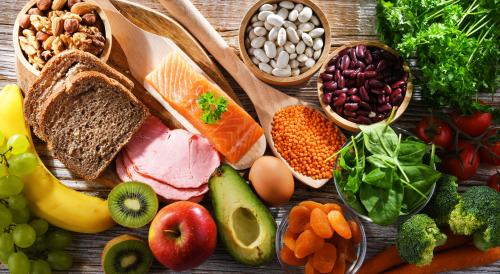
"Unprocessed" in the case of grain or rice means that we opt here for the whole grain variety. It has a lower glycemic index. This means that when consumed, the blood sugar level does not rise as quickly as in their variants freed from nutrients. In general, we should be careful not to let the blood sugar level rise too much throughout the day due to too many carbohydrates and sweetened foods.
How quickly the blood sugar level rises - and how much we gain from it - is also related to the type of preparation. After eating100 g of pasta, we can put on sometimes more, sometimes less fat - depending on whether it has cooked for a long time or is rather "al dente". Pasta that has been in hot water for a long time is digested more quickly by our stomach, and the blood sugar level rises correspondingly quickly. Therefore, in the low-sugar diet, the al dente variant is preferable.
Fibre also prevents the jump in insulin, so we should take as many of them as possible distributed throughout the day. As mentioned earlier, it is clearly better to eat fruits and vegetables whole rather than juicing them. Because in this way their structure remains.
A low-sugar, high-fiber diet helps us incidentally also lose weight, because the blood sugar level remains constant and not too much insulin is released.
In the supermarket
The supermarket visit is full of traps; hidden sugar lurks everywhere. But even here, there are simple rules that make shopping easier for us: Our first port of call should be the fruit-and-vegetable stand. Anything beyond that, we need to inspect closely - at least for our first purchases.
It is best to buy food without a label and without a known company logo, because this is a fairly safe indication of a processed product. If there is a label on it, however, we should inspect it closely: Anything with more than three ingredients is suspected of being unhealthy and containing added sugars. The longer the list, the worse. In addition, we can take a closer look at the individual ingredients and locate the sugar in its different variations there (see the chapter "Confusing labeling").

We should always look at the label, even if we have a supposedly healthy product in our hands. And lastly: We should not go hungry to the supermarket; then the temptation to reach for an unhealthy food is lower.
At home
Here we are completely free and have it in our hands to avoid sugar. For example, by reducing the addition of sugar by a third in recipes. We should get into the habit of cooking ourselves - those who do not do so remain dependent on the food industry.
It doesn't have to be recipes for which you stand at the stove for hours: it's enough, for example, to fry a piece of organic salmon in the pan, cook some potatoes as a side dish (cooked potatoes in particular have a low glycemic index) or whole grain rice. As another side dish, either a raw vegetable salad or some steamed vegetables. Ready is the healthy, tasty and quickly prepared meal.
Who would like to lower the sugar in its nutrition still more strongly, reaches out to low carb alternatives as for example courgette pasta.
Have we got used altogether to less sugar, even carrots or apples have a sweeter taste. Robert Lustig, who admits to having also eaten processed food in his early years, says in an interview that he now even goes out to eat with his family only once a month because he can neither control nor keep track of the hidden sugar in a restaurant.
Beverages
As far as drinks are concerned, it's quite simple: they should definitely be sugar-free - because otherwise you have no control over the amount of sugar ingested. Here teas and water are best suited. So that it does not become completely monotonous, you can add a shot lemon juice to the water or some slices of cucumber. Those who need a little more variety add a splash of juice and drink an extremely diluted spritzer (the spritzers in restaurants - although already diluted - are still too sugary, as the juice content is relatively high here). A glass of water or tea also helps when we have a longing for something sweet after a meal and don't want to give in.

What we should not drink are soft drinks, energy drinks, sports drinks, juices and smoothies.
Children’s Nutrition
How do you explain to your children to avoid sugar? It's best not to. Children mimic what adults do. If we eat good food, they too will feel like it. If they have already become accustomed to a higher dose of sweets, it makes sense to slowly phase out sugar without them noticing. If you previously sweetened your tea with a teaspoon of sugar, add only half a teaspoon for a while, then none at all. This way, the renunciation is easier to manage. In the ideal case the child does not notice the conversion at all.
Robert Lustig speaks of the fact that he always has two patients, if an over-weighty child comes into its consulting hour: the child itself and mother or the father. If they are not insightful and do not change their eating habits likewise, all efforts around the health of the child will not fruit, because parents have a strong role model function.
Children up to 12 months of age should not get any sweets at all. After that, it is important not to impose any bans, because forbidden things seem all the more interesting. It is good not to offer children sweets unless they ask for them, and not to store any sweet stuff in the house. All sweetened drinks should also be kept out of the home. If the children are invited to a friend's house, are celebrating a birthday with them, or are planning a party such as Halloween, they should be allowed to have fun. They can eat to their heart's content, but they should eat the candy they collected on Halloween on the day itself and not save anything for later, because that makes them get used to it. It is similar with an Advent calendar that is filled with sweets. Here, the child gets used to a steady dose of sugar over 24 days.
Eating sweets should become something special - for example, by only offering them at home on weekends - not the norm. On other days, healthy eating should be the focus. The 80-20 rule mentioned above should also apply to children.
It is important that we as parents keep track of how much sugar our child eats throughout the day. Definitely, we should not offer sweetened breakfast cereals, because in the worst case scenario, our child will eat plenty of sugar throughout the day even so. A protein-rich breakfast consisting of eggs, nuts, cottage cheese and an apple is much better.
We must not forget: Whether we eat a candy bar or our child makes a huge difference, because the body mass of our children is much lower. That is, in proportion, our children thereby consume much more sugar than we do.
Simple calculation example: a man weighing 100 kilograms eats a candy bar (50 g). If a child with an average weight of 20 kilograms now eats the same chocolate bar, it has eaten five times the amount in relation to its body weight. So, conversely, it is as if the man had eaten five candy bars.
If the child eats four candy bars of 50 grams at a birthday party, the man would have to eat TWENTY candy bars to come in proportion to the same amount.
If our children are sick, we should not give them sweets to eat, so that they get better faster. An absence of sugar influences the immune defense positively.
Outlook
Now you've gotten an important overview of what you can watch out for when it comes to sugar, so that your health is at least partly in your hands. It's up to you to make something of it.
But as we've seen, globally you can't rely on personal responsibility. Just as you couldn't put your faith in it not too many years ago when it came to cigarette consumption and the use of car seat belts. It is not enough to simply inform people that sugar is unhealthy. That only creates a bad conscience in them. Even Foodwatch has come to the conclusion that nutrition lessons in schools are of little use. So what could be done to put a stop to sugar mania?
Japan had already enacted the Metabo law against obesity and related diseases in 2009 in order to curb healthcare costs - although the country was not at all badly affected compared to others: medical teams visited large companies; they checked employees' weight, blood pressure, blood sugar and blood fat levels. Those who scored poorly were prescribed a diet. And exercise. If the companies did not manage to motivate their employees to lead a healthier lifestyle, they had to pay higher contributions into the health insurance from then on.
To implement the law, the companies put up information posters, sent out daily e-mails with diet tips and sports exercises. With the employer police, overweight employees had to go by bicycle or on foot on patrol, only those with an acceptable BMI were allowed to use the car. There was no compulsion for employees, but the social pressure was very high. Those who didn't participate in the fitness and nutrition program found themselves in an outsider role.
So is government control the solution? Is it perhaps the sugar tax that British chef Jamie Oliver, among others, had advocated for the U.K. and that was actually enforced? Or does this just place an additional burden on the poor population because they still buy the products they may already be addicted to? After all, one of the consequences was that some English soft drinks now contain less sugar than their German counterparts.
A step in the right direction would certainly be, as Foodwatch demands it, at least to abolish VAT on fruit and vegetables, so that these products would become cheaper.
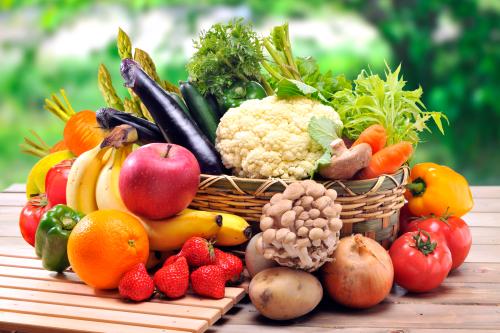
Naturally, no one wants to be prescribed what he eats. But is this not already the case, asks Robert Lustig. After all, it is now made very difficult for individuals to avoid sugar traps. To make this easier, it would be important to introduce a mandatory food traffic light, which would allow consumers to see at a glance how (un)healthy a product is. Or the Nutriscore, in which healthy ingredients are offset against the unhealthy ones to provide an overall view. Countries such as France, Belgium and Great Britain are leading the way here. In Germany, such information is still voluntary. In Chile, on the other hand, warning labels on food are required by law.
School and daycare meals should be based on the recommendations of the Nutrition Societies.
It would also be important to regulate advertising for sugary products - similar to alcohol and cigarette advertising. Foodwatch demands the prohibition of strongly sugary products, whose target group are above all children, in order to prevent that the advertising measures of the food industry do not contribute additionally to the malnutrition of children.
In America it would be necessary to make healthy food also accessible to the poor. In poorer quarters so far mostly fast food chains prevail; stores with natural products are scarce.
Why this article?
"Why is QUADRO writing an article on sugar consumption?" you may be asking yourself. It's simple: because we are passionate about children's health and healthy development, and we are incorporating the knowledge we gain into our current and future product developments.
On the way to building a sound knowledge about children and family, we deal with many interesting topics. It is our passion to develop really good toys. Our complex and versatile products support optimal motor development of your children (fine and sports motor skills). In addition, QUADRO's system features also promote and strengthen their cognitive and creative abilities, among other things (compare the articles "Couchpotatos - why children suffer from lack of exercise even more than adults", "1 + 1 + 3 = QUADRO" and "Two plus three is purple").
If you have ideas or suggestions for interesting topics or questions, please write to us anytime at [email protected]. We look forward to hearing from you!
Sources
- Dr. Robert Lustig. Fat Chance. The Hidden Truth About Sugar, Obesity and Disease. HarperCollinsPublishers. London, 2014
- Eating You Alive. Regie: Paul David Kennamer Jr. USA 2018.
- Heilen ohne Pillen und Skalpell. Regie: Kurt Langbein. Deutschland, 2014.
- Unser Bauch. Die wunderbare Welt des Mikrobioms. Regie: Thierry de Lestrade, Sylvie Gilman. arte. Frankreich, 2019.
- That Sugar Film. Regie: Damon Gameau. Australien, 2014.
- Süße Zusatzstoffe: Zuckeraustauschstoffe und Süßstoffe. Lebensmittelklarheit. Portal für mehr Durchblick. Verbraucherzentrale, 24.2.2022
- Zucker-Schock – Wie Lobbyismus unsere Gesundheit gefährdet I frontal. ZDFheute Nachrichten, 28.7.2020
- Sucre, le doux mensonge
- Sucht nach Süßem: Warum wir zu viel Zucker essen | Die Tricks der Zuckerindustrie SWR
- Leben ohne Zucker: Gut für die Gesundheit? | Doku | NDR
- Dokumentation: Die große Zuckerlüge. Makro. 3sat
- Bien nourrir son cerveau | ARTE
- 8 Znaków Jakie Daje Ci Organizm Gdy Jesz Za Dużo Cukru
- Detoks cukrowy: co się stanie z Twoim zdrowiem, gdy przestaniesz jeść cukier? | Dr Bartek Kulczyński
- Kamila Banel. Co cukier robi z mózgiem dziecka?
- Les ALTERNATIVES AU SUCRE pour les enfants
- Jak walczyć z uzależnieniem od słodyczy | Iwona Wierzbicka | Porady dietetyka klinicznego
- Sugar is Not a Treat | Jody Stanislaw | TEDxSunValley
- Intégrale : sucre, comment ils nous rendent accros ! - Tout compte fait
- PODCAST: Słodycze i cukier w diecie dziecka- tak czy nie?
- How Sugar Affects Kids (Dr. Robert Lustig & Austin McGuffie)
- Q&A: Dr. Goday describes how sugar impacts a child's health
- The Connection Between Your Child's Blood Sugar and Behavior
- New Study Shows Impact of Sugar on Kids
- Le sucre : chronique d'un tueur en série
- Zucker, Fett & Co. Wenn Essen krank macht.
- Kinderernährung. Foodwatch. 13.07.2016.
- Jürgen Rees, Angela Köhler, Dieter Dürand. Japan als Vorbild gegen Fettleibigkeit. Wirtschaftswoche, 09.01.2009
- Anteil der Erwachsenen mit Übergewicht oder Fettleibigkeit in ausgewählten OECD-Ländern im Jahr 2019. Statista.
- Die Welt ist zuckerkrank. WHO-Bericht zu Diabetes. Spiegel, 06.04.2016
- Geheime Lobbytreffen von Julia Klöckner: foodwatch klagt. Foodwatch, 02.02.2021
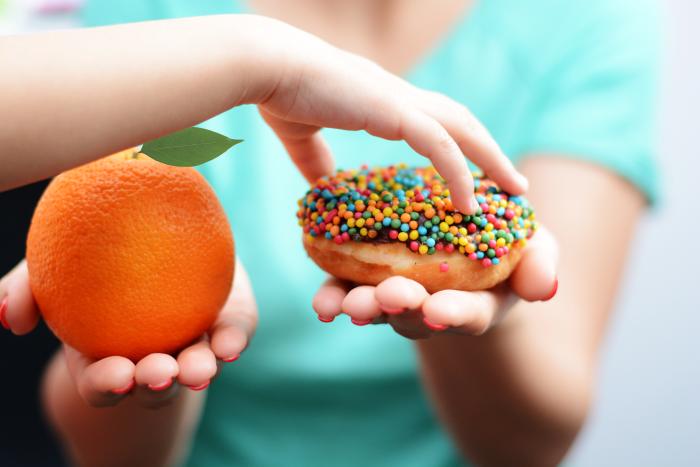
Comments